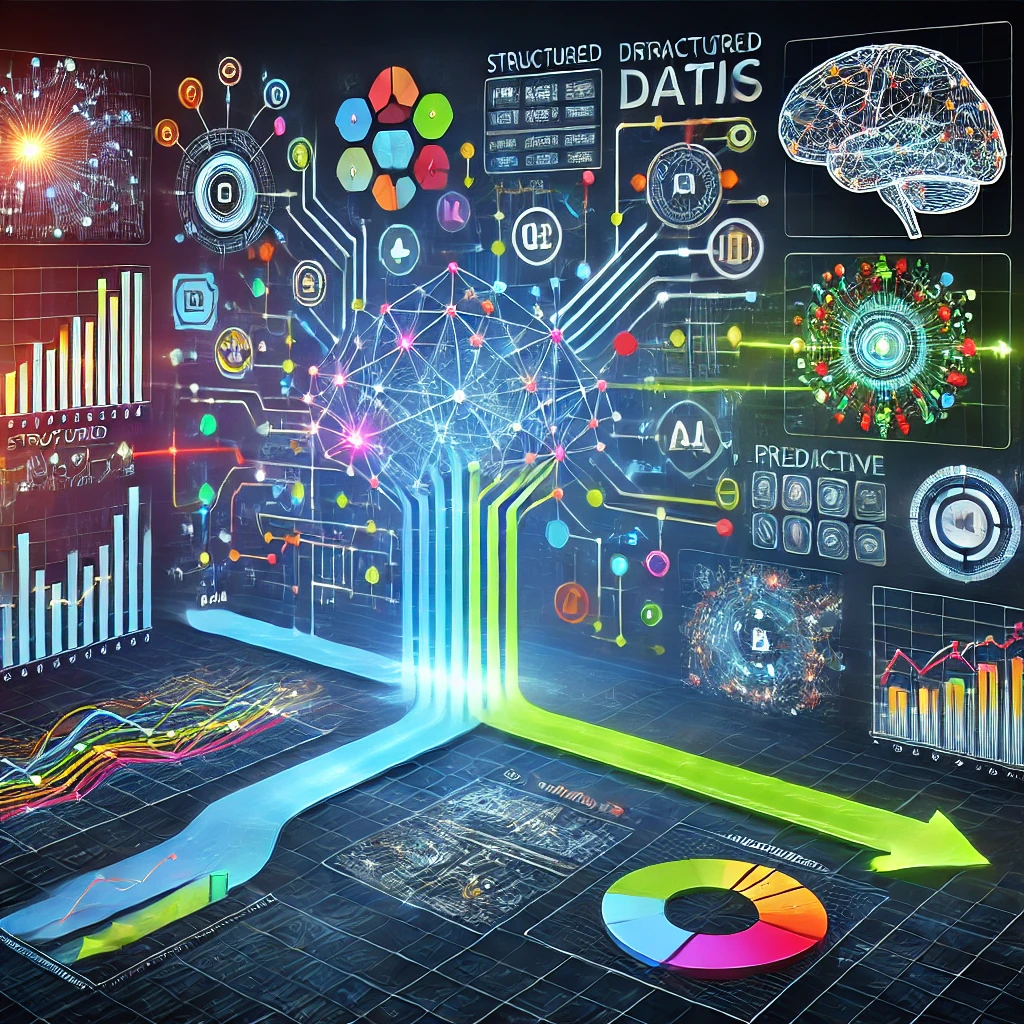
Artificial intelligence (AI) is revolutionizing how organizations approach predictive analytics. By leveraging powerful machine learning algorithms and deep learning techniques, AI enables businesses to forecast future trends, identify risks, and make more informed decisions. Predictive analytics powered by AI can transform raw data into actionable insights that drive success in various industries, from healthcare to finance and retail.
What is Predictive Analytics?
Predictive analytics refers to the use of historical data, statistical algorithms, and machine learning techniques to predict future outcomes based on past patterns. It goes beyond simple data analysis, enabling businesses to anticipate trends, behaviors, or events before they happen. From predicting customer churn to forecasting sales, predictive analytics plays a vital role in decision-making across many sectors.
The Role of AI in Predictive Analytics
AI is a game-changer in the world of predictive analytics because it automates the process of analyzing vast amounts of data. Traditional predictive models often rely on human input for selecting features and building models, but AI simplifies and enhances this process through automation and pattern recognition. AI-powered systems can analyze complex data sets, identify correlations, and continuously improve their predictive capabilities through machine learning.
How AI Works in Predictive Analytics
The integration of AI in predictive analytics primarily occurs through machine learning (ML), deep learning, and natural language processing (NLP). Machine learning allows models to learn from historical data without explicit programming, identifying patterns that humans may miss. Deep learning, a subset of ML, uses neural networks to analyze data in layers, mimicking the human brain’s functioning. NLP, on the other hand, processes and understands human language, making it valuable for analyzing text data like customer reviews or social media posts.
Benefits of Using AI in Predictive Analytics
The advantages of using AI for predictive analytics are numerous:
- Improved Accuracy: AI’s ability to process vast amounts of data and recognize subtle patterns leads to highly accurate predictions, reducing the risk of human error.
- Faster Decision-Making: Automated analysis allows organizations to make quicker decisions based on real-time data.
- Enhanced Scalability: AI models can handle large and diverse data sets, allowing them to scale across different applications and industries.
- Better Risk Management: Predictive models help identify potential risks before they escalate, enabling companies to take proactive measures.
The Difference Between Traditional and AI-Driven Predictive Analytics
Traditional predictive analytics relies heavily on statistical models like linear regression or decision trees. These methods are limited by their need for manual input and predefined assumptions. In contrast, AI-driven predictive analytics continuously learns and adapts, using advanced algorithms to find relationships in data that traditional methods may overlook. AI models are better suited to handle unstructured data, such as text, images, or audio, which can provide richer insights.
Types of Predictive Models Used with AI
Several types of predictive models are enhanced by AI technologies:
- Regression Models: These models predict continuous outcomes, such as sales growth or temperature changes, by identifying relationships between variables.
- Classification Models: Classification models are used to categorize data into distinct groups, such as identifying fraudulent transactions versus legitimate ones.
- Clustering Models: AI can detect natural groupings in data, helping businesses segment customers based on purchasing behavior.
- Time Series Analysis: AI-based time series models are excellent for forecasting trends, such as predicting demand fluctuations over time.
AI Algorithms Commonly Used in Predictive Analytics
AI in predictive analytics often relies on several powerful algorithms, including:
- Decision Trees: A simple yet effective algorithm for classification and regression tasks.
- Random Forests: An ensemble learning method that uses multiple decision trees to improve predictive accuracy.
- Neural Networks: These algorithms mimic the human brain and are widely used for deep learning tasks, making them suitable for complex data sets like images or speech.
- Support Vector Machines (SVM): SVM is used for classification tasks, particularly when the data is sparse or has a clear margin of separation.
Steps to Implement AI in Predictive Analytics
Successfully implementing AI in predictive analytics involves several key steps:
- Data Collection: Gather relevant historical data, ensuring that it is comprehensive and representative of the problem you want to solve.
- Data Preparation: Clean and preprocess the data, which includes handling missing values, outliers, and normalizing features.
- Model Selection: Choose the appropriate AI algorithm for your problem, considering factors like accuracy, interpretability, and computational resources.
- Model Training: Train your AI model using historical data, and test it on new data to ensure its effectiveness.
You can also read; How to Build a Machine Learning Pipeline from Scratch
Data Collection and Preparation for AI Models
The success of any AI model hinges on the quality of the data. Data must be clean, free from inconsistencies, and properly labeled for supervised learning tasks. Feature engineering, the process of selecting and transforming data features, plays a crucial role in optimizing model performance.